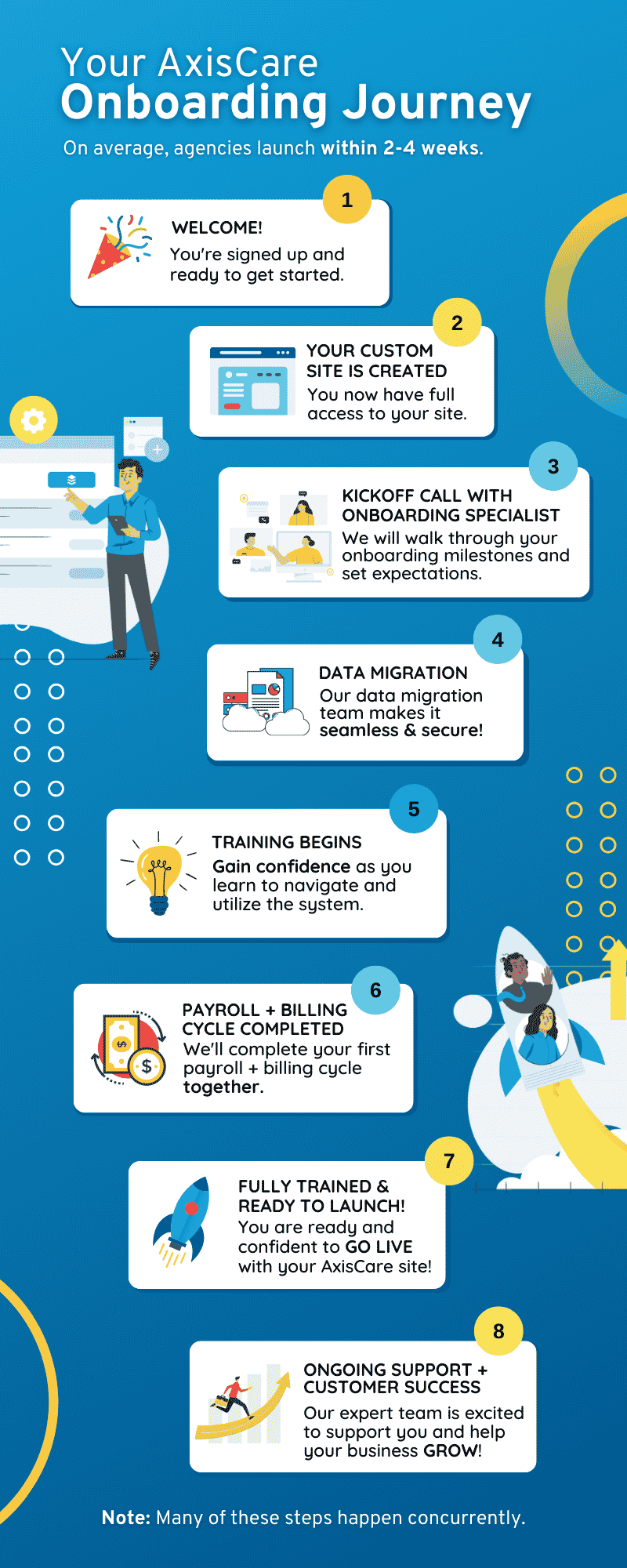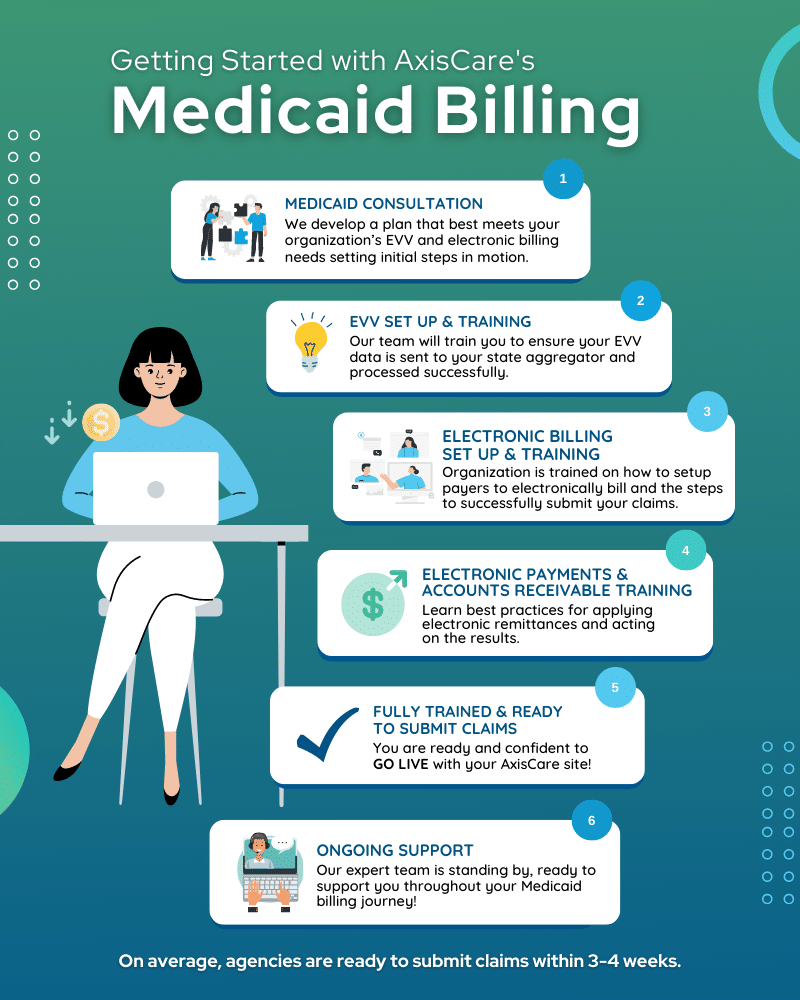Scheduling is the life force of a home care agency’s operations. With every new day, a new problem presents itself: how many clients need to be seen today? What do they need from us, and which caregivers are right for the job? How can we use each staff member’s skills efficiently, all while optimizing their route to minimize travel time?
The answers to these questions can change on a dime, and in turn, schedulers must be endlessly agile. Their balancing act requires them to build an airtight shift assignment framework while remaining just flexible enough to accommodate last-minute changes. It’s a tall order for any human to handle, and artificial intelligence (AI) is the ultimate companion for getting the job done.
The Challenges of Traditional Scheduling in Home Care
Even the most organized home care schedulers experience operational friction. The risk of human error is constantly present, and a single mistake can send the day’s assignments into a tailspin. It’s not uncommon for team members to drop a shift unexpectedly due to illness or running behind on other visits. At that point, it’s up to schedulers to quickly fill the gap. If they can’t, the visit will be missed entirely, leaving the client without the care they need.
Unpredictable scheduling doesn’t just affect clients; caregivers often feel exhausted by the nonstop grind. Jumping from visit to visit, battling traffic on the road, and never quite knowing when overtime might come their way is a recipe for burnout. That’s not to mention the emotional toll of dealing with vulnerable and high-needs populations. For this reason, improved scheduling is just as important for boosting employee satisfaction as it is for improving client outcomes.
The Benefits of AI-Powered Scheduling
AI isn’t meant to replace schedulers – it’s designed to complement their existing skills and remove as much friction as possible from their workflows. With AI, they can work faster and more accurately than ever before, speeding up routine administrative tasks while reducing their margin of error.
Remove Bias from Scheduling
It’s simply human nature for bias to inform our decision-making. In a home care context, schedulers may be more inclined to give work to caregivers they know and trust, especially if they feel more confident that the work will be completed correctly and on time. While their intentions may be good, this approach ultimately leaves some caregivers with too few hours each week, and others either at capacity or overloaded.
Using AI for scheduling, on the other hand, takes only the hard facts into account. It matches open shifts to qualified caregivers whose skill sets align with clients’ needs, allocating a reasonable number of hours to each team member every week.
Improved Client Outcomes and Satisfaction
A well-run schedule is one that sees caregivers arriving on time, prepared for the task ahead, and ideally, visiting the same clients week after week. Stability is one of the most important pillars of clients’ physical and emotional well-being, and consistency paves the way. When caregivers are able to remain punctual and provide reliable support, clients experience fewer disruptions to their routines and care plans.
Consistency also opens the door to forging trust-based relationships. Clients who feel comfortable around their caregivers are more likely to be communicative and honest about what they need, which can actually help reduce the risk of complications or hospital readmissions down the road. For families, knowing their loved one is receiving dependable, attentive care that preserves their comfort and dignity is a welcome dose of peace of mind, leading to higher satisfaction rates and stronger long-term loyalty.
Real-Time Adaptability and Dynamic Rescheduling
Scheduling systems with AI capabilities can instantly react to last-minute changes, delivering seamless care even in the face of disruptions. For example, if a caregiver calls in sick just hours before they’re due to see a client, the system can automatically scan the roster for qualified replacements based on availability, routing, skills, and client preferences.
Next, it reassigns the shift in real time, notifies the new caregiver (ideally via a mobile app), and updates the schedule at the same time. No need for hurried phone calls, check-ins, or manual adjustments. If a caregiver is unable to take a shift that has been assigned to them last-minute, the process begins from scratch again, taking just seconds or minutes to crunch the data once more and identify an available team member.
Implementing AI-Powered Scheduling: Best Practices and Considerations
No matter the organization or industry, it’s essential to implement AI tools gradually, transparently, and responsibly. Start by finding a solution designed specifically for home care that can deliver the key features and benefits discussed above, and make sure it can integrate with your existing tech stack. If not, it may end up adding more friction than ease to your scheduling workflow!
Once you’ve found the right platform, focus on preparing your team for the transition. AI might be a new and intimidating concept to some team members, and it will be especially important to explain that this solution is not designed to replace or eliminate their roles.
Schedule comprehensive training sessions that cover both the technical aspect of using the new system but also the “why” behind it, including how it can reduce administrative burdens and free up time to focus on client care initiatives. Consider rolling out the system in phases to avoid overwhelm, potentially starting with a small test group to gather feedback before agency-wide adoption.
Bear in mind that even if you follow these best practices to a tee, you may still be met with some resistance from your team. It’s normal to experience growing pains during periods of significant change – the most important consideration is to be patient as your staff grows into this new phase and offer plenty of technical support along the way.
The Future of AI in Home Care Scheduling
We’ve still only seen the tip of the AI iceberg in the home care space. It’s impossible to predict the future, but based on the trends already being observed in our industry, we expect to see deeper integrations with telehealth in the near future – for example, analyzing live video consultations to identify subtle changes in a client’s condition.
While a caregiver conducts a virtual wellness check, future versions of AI may be able to monitor the interaction in real time, cross-referencing its observations with the client’s EHR and instantly recommend scheduling an in-person visit if needed.
It may also be able to enhance modern reporting tools with deeper predictive analytics, creating models that aim to forecast clients’ health requirements and outcomes based on a massive pool of empirical data. Agencies could then use those models to adjust their service offerings based on clients’ projected needs.
On an individual scale, future versions of AI may be able to analyze a client’s health data to forecast potential health risks, like a high likelihood of hospitalization due to worsening heart failure. If the system detects early warning signs, it could automatically suggest a caregiver check-in and adjust the client’s care plan to include more frequent monitoring.
Integrate AI-Powered Scheduling for your Agency With AxisCare
AxisCare is already using AI to help schedulers and home care teams at large deliver better care for clients and run more efficient operations organization-wide. Request a free demo to learn more about how you can start scheduling faster and smarter.









